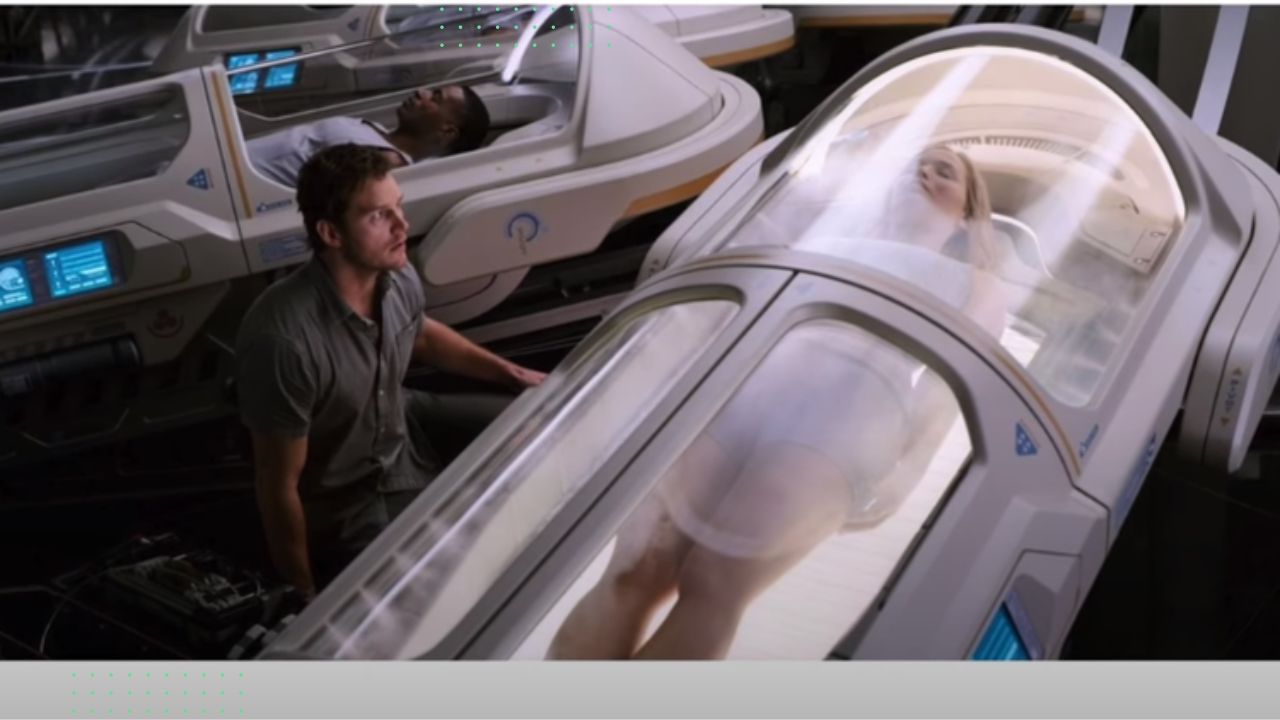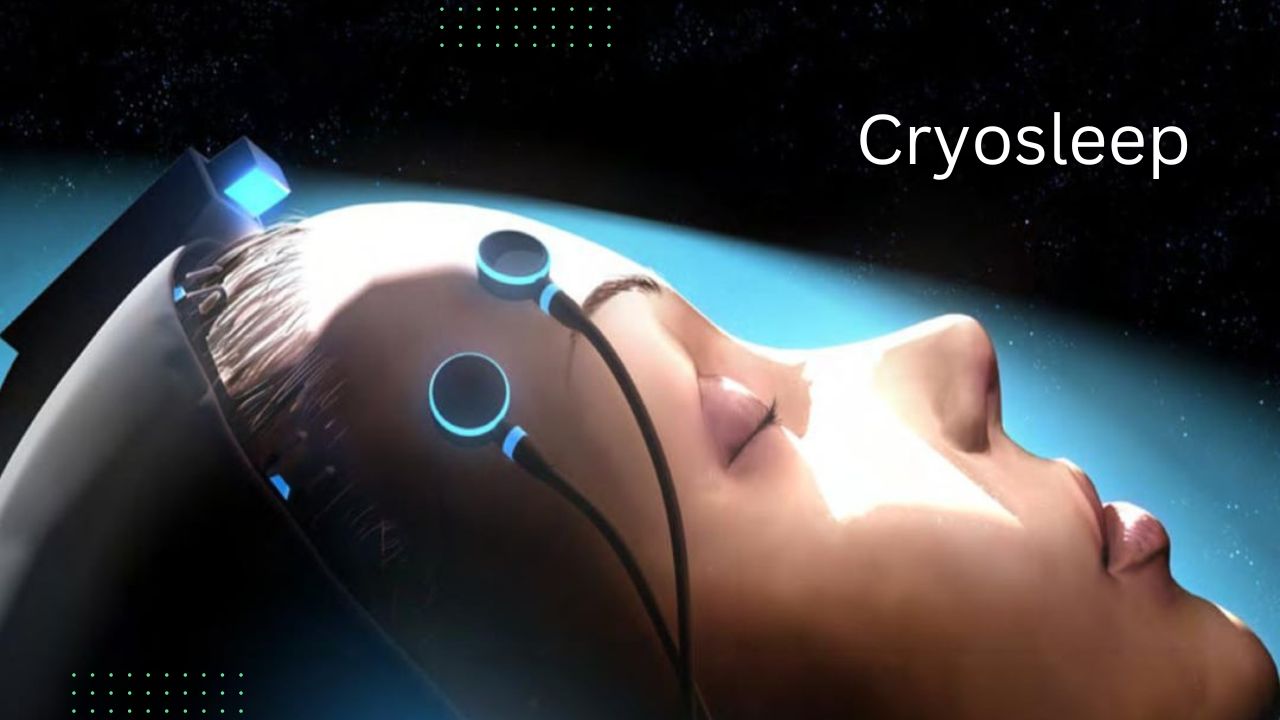Cryosleep, also known as suspended animation, is a hypothetical state in which a living organism is placed in a state of reduced metabolic activity, similar to hibernation, in order to preserve the body and slow down aging processes.
The idea of cryosleep has been popularized in science fiction, where it is often portrayed as a method for long-term space travel or as a way to preserve individuals until a cure for a disease is found. However, currently, cryosleep technology does not exist for humans, and its feasibility and safety remain uncertain.
What is cryosleep?
Cryosleep, also known as cryogenic sleep or suspended animation, is a hypothetical state in which a living organism’s metabolism is slowed down to an extremely low level, almost to the point of complete suspension. The idea is to induce a state of hibernation or torpor that would allow astronauts or other people to travel long distances through space or endure long periods of time in extreme environments with minimal metabolic activity.
The concept of cryosleep has been popularized in science fiction literature and movies, but in reality, the technology does not exist yet to achieve it for humans. However, some experiments have been conducted with animals and lower organisms, such as insects and worms, that have shown some success in inducing a state of suspended animation.
The potential benefits of cryosleep for space travel or medical purposes are numerous, such as reducing the need for consumables like food and water, minimizing the effects of radiation exposure, and preserving tissues for transplant. However, there are also many challenges and risks associated with the concept, such as the possibility of tissue damage, metabolic imbalance, or long-term effects on mental health.
Is cryosleep real?
Cryosleep or suspended animation is a real concept that has been explored in scientific research and popularized in science fiction. However, at present, the technology does not exist to induce and maintain a state of cryosleep for humans. While experiments have been conducted with animals and lower organisms, the challenges of safely inducing and maintaining a state of suspended animation for humans are significant.
There are many potential benefits of cryosleep for space travel and medical applications, such as preserving tissues for transplant, reducing the need for consumables like food and water, and minimizing the effects of radiation exposure. However, there are also many challenges and unknowns that need to be addressed before cryosleep can be a reality, such as preventing tissue damage, maintaining proper metabolic balance, and avoiding long-term effects on mental health.
While cryosleep is a real concept, it remains in the realm of hypothetical possibilities until such time as the technology and methods are developed to make it a practical and safe option for human use.
Is cryosleep possible?
At present, cryosleep is not possible for humans. While some experiments have been conducted with animals and lower organisms, the technology does not yet exist to safely induce and maintain a state of suspended animation for humans. There are still many challenges and unknowns that need to be addressed before cryosleep can be a reality, such as preventing tissue damage, maintaining proper metabolic balance, and avoiding long-term effects on mental health.
However, researchers are actively working on developing new methods and technologies that could potentially make cryosleep a reality in the future. These developments could have significant implications for space travel and medical applications, but much more research and testing is needed before cryosleep becomes a practical and safe option for human use.
What is the cryosleep chamber?

A cryosleep chamber, also known as a cryopod or cryogenic pod, is a hypothetical device that would be used to induce a state of suspended animation in a living organism. The idea behind the cryosleep chamber is to reduce an organism’s metabolic activity to an extremely low level, allowing it to endure long periods of time in space or other extreme environments without consuming resources like food and water.
In science fiction, cryosleep chambers are often depicted as cylindrical pods that are large enough to accommodate a single human. The occupant would enter the chamber, and then the temperature inside would gradually be lowered to induce a state of suspended animation.
While the concept of the cryosleep chamber is fascinating and has been popularized in science fiction, the technology does not yet exist to induce and maintain a state of suspended animation for humans in a safe and practical manner. There are many challenges that need to be addressed before cryosleep chambers can become a reality, such as preventing tissue damage, maintaining proper metabolic balance, and avoiding long-term effects on mental health. However, researchers continue to work on developing new methods and technologies that could potentially make cryosleep chambers a reality in the future.
Benefits of cryosleep
The potential benefits of cryosleep, for space travel and medical applications are numerous, although the technology does not yet exist to induce and maintain cryosleep for humans. Here are some of the potential benefits that have been proposed:
- Preservation of tissues: Cryosleep could potentially be used to preserve tissues for transplant, allowing for longer preservation times and increasing the chances of successful transplantation.
- Reduction of resource consumption: Cryosleep could significantly reduce the need for consumables like food and water during long space missions, reducing the amount of resources needed to sustain a crew.
- Minimization of radiation exposure: Cryosleep could help to minimize the effects of exposure to ionizing radiation during long space missions, which can be harmful to human health.
- Preservation of muscle and bone mass: Cryosleep could potentially help to preserve muscle and bone mass during long periods of inactivity, reducing the risk of muscle and bone loss that can occur during prolonged space missions.
- Extended space travel: Cryosleep could potentially allow for much longer space missions, as astronauts could be placed into suspended animation for much of the journey, reducing the amount of time they need to be active and consume resources.
While the potential benefits of cryosleep are numerous, there are also many challenges and unknowns that need to be addressed before it becomes a practical and safe option for human use.
Conclusion
Cryosleep is a real concept that has been explored in scientific research and popularized in science fiction. While the technology does not yet exist to induce and maintain cryosleep for humans in a safe and practical manner, researchers continue to work on developing new methods and technologies that could potentially make it a reality in the future.
The potential benefits of cryosleep for space travel and medical applications are numerous, including the preservation of tissues, the reduction of resource consumption, the minimization of radiation exposure, the preservation of muscle and bone mass, and the possibility of extended space travel. However, there are also many challenges and unknowns that need to be addressed, such as preventing tissue damage, maintaining proper metabolic balance, and avoiding long-term effects on mental health.
While cryosleep remains in the realm of hypothetical possibilities, it is an intriguing concept that continues to capture the imagination of scientists, writers, and the general public alike. As research in this area continues, we may eventually see cryosleep become a practical and safe option for human use, opening up new possibilities for space exploration, medical treatment, and more.
